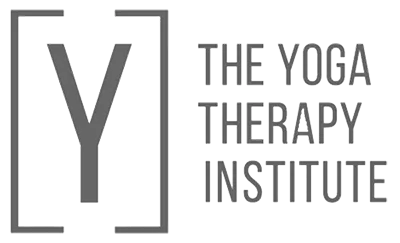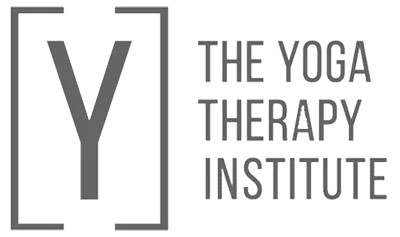
Burnout Syndrome is a pervasive issue in today’s fast-paced world. It’s not just a buzzword; it’s a serious condition resulting from prolonged stress and frustration that affects physical and emotional well-being, as well as motivation.
The Day I Learned About Burnout
The first time I heard the term “Burnout” was quite some years ago during a Yoga class when a new student, Isabelle, joined. Isabelle, a beautiful and seemingly fit woman in her forties, had spent many years as a bank manager in an upscale area of the city.
She arrived with a litany of unexplained symptoms: exhaustion, muscle pain, memory lapses, difficulty concentrating, anxiety, and sleep disturbances. All she could talk about was her deep dissatisfaction with her work conditions, particularly her relentless boss, who seemed to make her life unbearable every day. Back in my corporate days, I often heard people vent their frustrations about their jobs and bosses, which was pretty normal, right…? I must admit, I didn’t fully grasp the severity of her situation until our yoga class began.
Isabelle’s physical condition was alarming. She struggled to raise her arms above her head without experiencing pain, and even the simplest movements left her breathless and utterly drained. It was clear that she was, well… totally burnt out. I had to adapt the yoga class to cater to her specific needs, improvising a restorative session that was well-received by all participants. Unfortunately, Isabelle never returned to class; her Burnout had taken such a toll that she couldn’t even make it to the front door.
Symptoms of Burnout: How It Affects Body and Mind
For those unfamiliar with the term, “Burnout” is the result of prolonged exposure to both physical and emotional stress, whether stemming from home, work, or a combination of both. This sustained stress creates a sense of being trapped with no apparent solution in sight. Eventually, the body and mind can reach a breaking point, much like a short-circuit occurs when the voltage becomes too high.
Recent research has shed more light on Burnout’s multifaceted nature, confirming that it’s not just a state of mind but a physiological and psychological response to stress. Studies, such as those from the World Health Organization (WHO) and the American Psychological Association (APA), emphasise the importance of acknowledging Burnout as a legitimate medical condition.
The symptoms of Burnout encompass various aspects:
- Physical and emotional exhaustion: Overwhelming fatigue, mental weariness, and emotional depletion.
- Impaired cognitive function: Difficulty concentrating, fuzzy thinking, and memory lapses.
- Muscle pain and stiffness: Physical discomfort and tension throughout the body.
- Vision problems: Blurry vision can occur due to the strain of burnout.
- Gastrointestinal distress: Nausea, changes in appetite (either a loss or increase), and digestive issues.
- Sleep disruptions: Insomnia or excessive sleep, disrupting normal sleep patterns.
- Loss of motivation: Intense demotivation and a struggle to find purpose.
- Morning struggles: Difficulty getting out of bed in the morning or lack of motivation to start the day.
- Chest and back pain: Some individuals experience pain or pressure in the chest and middle back. This can result from the breath-holding and tension in the respiratory muscles, a phenomenon often referred to as the “frozen” effect.
- Cold extremities: Consistently cold hands and feet, along with an inability for the body to warm up.
How Do I Know If I Have Burnout Syndrome?
It’s important to consult a healthcare professional, whether it’s your primary doctor or a company-appointed physician, to receive a definitive diagnosis of Burnout. This step is crucial because the symptoms associated with Burnout can overlap with those of other serious health conditions, including depression, degenerative diseases, heart problems, or even cancer, all of which demand specialised medical attention.
In most cases, individuals grappling with Burnout have endured a prolonged and intense period of stress, often connected to their work environment, although personal circumstances can also play a significant role in this debilitating condition.
When consulting your healthcare provider be open and honest when discussing both your personal and work-related circumstances. This openness will help them come up with an accurate diagnosis. Once your doctor confirms Burnout, the next step is to communicate with your employer.
It’s important to note that the procedures and regulations related to Burnout management may vary from one country to another. For example, in the Netherlands, the company doctor, typically affiliated with medical insurance, conducts relevant tests and reviews your doctor’s report. Upon confirmation, an agreement is reached regarding the duration of your leave, with all associated costs generally covered by the company.
Is Recovery Possible?
Recovery from Burnout is indeed possible, but it requires commitment and a comprehensive approach. Here’s what it entails:
- Intent and treatment: The employee must express a genuine intention to recover and improve your well-being. This involves following the recommended treatments as advised by a doctor. These treatments may include antidepressants, sleep aids, and professional coaching. However, there’s a growing trend among both companies and employees to explore alternative therapies like Yoga, Meditation, and Relaxation, which are considered more effective and less invasive in addressing work-related stress. These alternatives are supported by positive results from recent medical studies.
- Holistic approach: Beyond medications and coaching, lifestyle changes play a crucial role in rebuilding your well-being. This can include personal counselling, dietary adjustments, acupuncture, and regular massages.
- Patience and realisation: Both the employee and the employer must exercise patience and acknowledge that full recovery is a gradual and sometimes challenging process. Rushing a someone experiencing Burnout back to work too soon can worsen the situation. In general, the recovery period can vary, ranging from a few months to up to two years for a complete recovery.
In essence, recovery from Burnout is achievable, but it necessitates a comprehensive and patient approach that addresses the physical, emotional, and lifestyle aspects of the individual’s well-being.
So, I avoid Burnout by avoiding Stress?
Not quite. Many believe that avoiding stress is the key to preventing Burnout. However, research from a significant US study challenges this notion, suggesting that stress itself isn’t detrimental to your health unless you firmly believe it is.
It’s your attitude toward stress that truly matters. Some individuals, often referred to as “stress junkies”, thrive in high-pressure situations and remain seemingly immune to health issues. On the other hand, those who constantly perceive stress as a threat, thinking phrases like “this job is going to kill me” or “I can’t cope any longer”, tend to experience adverse physical and emotional effects.
This perspective shift is explored in an inspiring TED talk by Kelly McGonigal, where she discusses how you can make stress your ally rather than an adversary (Watch the talk here: Kelly McGonigal’s TED Talk).
Finding the Solution
The solution to addressing Burnout is prevention. Stress is an inherent part of life, and avoiding it entirely is not feasible. Instead, we must shift our perception of stress, learn effective ways to manage it, and navigate it both physically and emotionally.
The Dutch government has taken proactive steps to tackle this issue, which incurs millions of euros in costs annually. They recommend that companies introduce health and wellness initiatives for their employees. These can include activities such as boot camps, running clubs, Yoga and meditation classes, as well as health workshops. Additionally, legal recommendations concerning the physical work environment, human relations, and equitable treatment are essential for a company’s overall health.
The key to solving the Burnout problem is foresight—creating an environment that promotes well-being for everyone before the first casualties occur, as waiting until then will be too late. In Germany, for instance, the cost of a single employee experiencing burnout averages 254.40 euros per day, that’s nearly 93,000 euros per year.
The costs, however, isn’t solely financial; they extend to emotional and interpersonal aspects as well. The emotions of one unhappy, sick employee can permeate the workplace, fostering an atmosphere of discontent and mistrust. This, in turn, can lead to resentment among other employees who have to pick up the slack. Paying substantial bills to insurance companies to cover off-sick employees is not a viable solution.
The sensible course of action is for companies to invest in their employees’ health and allocate a dedicated budget for their physical and mental well-being. This long-term approach results in a robust, energised, and productive workforce. Employees are better equipped to give their best, maintain composure during stressful situations, and handle the unpredictability of the world.
In this way, employers become facilitators of success, benefiting both their organisation and their employees on personal levels, ultimately leading to a win-win scenario for all.
To learn more about ways to manage and prevent Burnout, check out our Short Course “Yoga Therapy for Burnout“.









